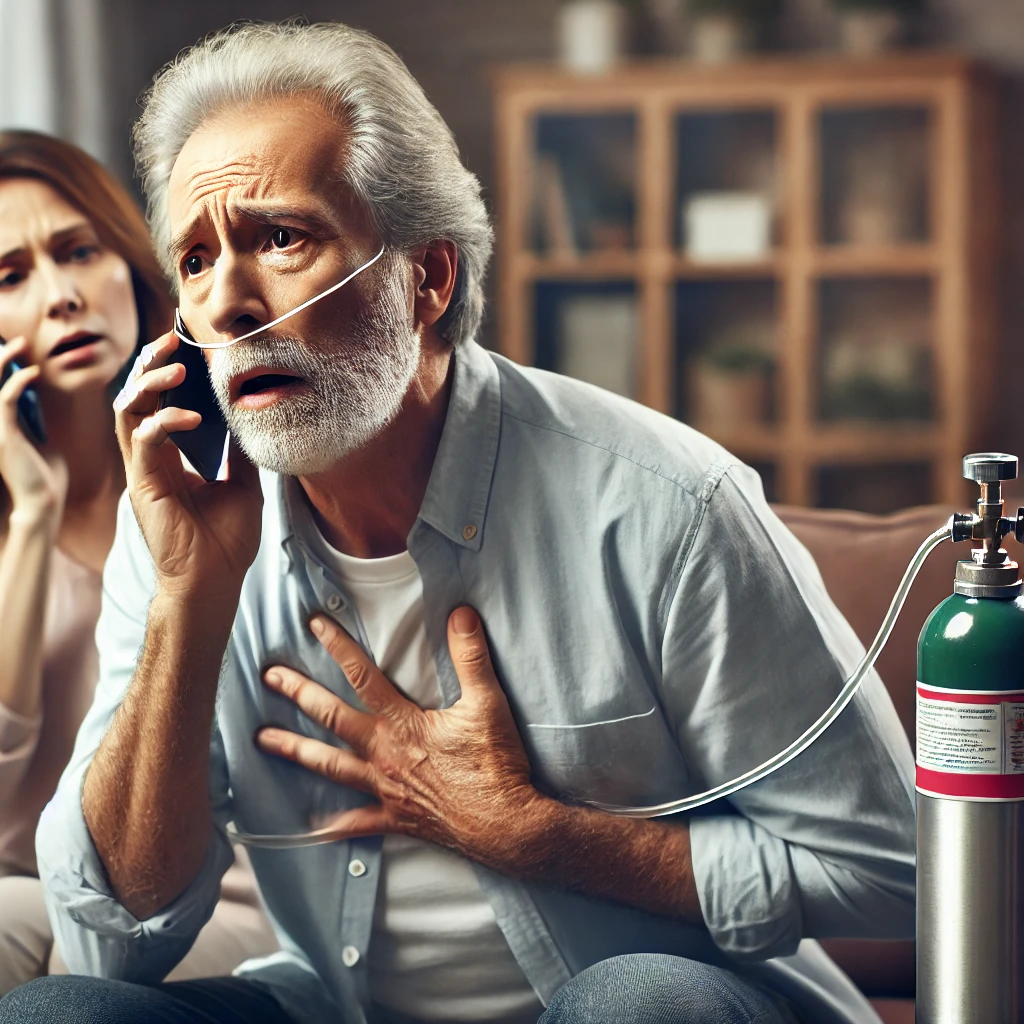Chronic Obstructive Pulmonary Disease (COPD) is a long-term lung condition that can significantly impact breathing and overall quality of life. While managing COPD with prescribed treatments and lifestyle changes can help maintain stability, there are times when symptoms worsen, requiring immediate medical attention. Understanding when to go to hospital with COPD is crucial for preventing complications and ensuring timely treatment.
This guide will help you identify warning signs that indicate the need for urgent care and provide steps to take in case of an emergency.
Understanding COPD and Flare-Ups
COPD is a progressive disease that includes conditions such as chronic bronchitis and emphysema. It leads to inflammation and narrowing of the airways, making breathing difficult. Flare-ups, also known as exacerbations, occur when symptoms suddenly worsen due to infections, air pollution, or other triggers.
A mild flare-up can often be managed at home with medication adjustments, but a severe exacerbation can quickly become life-threatening. Knowing the difference between a manageable episode and a medical emergency can make all the difference.
Warning Signs That Require Immediate Medical Attention
There are certain symptoms that indicate a COPD emergency, requiring a trip to the hospital. If you or a loved one experience any of the following, seek immediate medical care:
1. Severe Shortness of Breath That Doesn’t Improve
Breathlessness is a common symptom of COPD, but if it suddenly becomes much worse and does not improve with prescribed inhalers or breathing techniques, it could signal a serious problem.
2. Persistent Chest Pain or Tightness
Chest pain can indicate a variety of issues, including pneumonia, a collapsed lung, or even a heart attack, which is more common in individuals with COPD.
3. A Significant Drop in Oxygen Levels
If you use a pulse oximeter and notice your oxygen saturation falling below 88% and it does not improve with supplemental oxygen, you should get medical help immediately.
4. Increased Confusion or Difficulty Speaking
A lack of oxygen can affect brain function, causing confusion, dizziness, and trouble speaking. This is a medical emergency that requires urgent intervention.
5. Bluish or Gray Lips and Fingernails
Cyanosis, or a bluish tint to the lips and fingernails, is a sign that oxygen levels in the blood are dangerously low. This is a clear indicator that you should seek emergency care.
6. Severe Wheezing or Coughing with Mucus Changes
A worsening cough, excessive mucus production, or a change in mucus color (such as green or yellow) can indicate an infection that needs immediate treatment.
Steps to Take During a COPD Emergency
If you or someone around you is experiencing a COPD exacerbation, follow these steps:
- Use Quick-Relief Medications: Take prescribed rescue inhalers or nebulizers immediately to try to open airways.
- Monitor Oxygen Levels: If you have a home oxygen monitor, track levels and ensure they are within a safe range.
- Call 911 or Visit the Nearest Hospital: Do not wait for symptoms to worsen. Getting to the hospital quickly can prevent complications.
- Stay Calm and Use Breathing Techniques: Pursed-lip breathing and positioning yourself in an upright posture can help ease breathing while waiting for emergency help.
Preventing Severe COPD Exacerbations
While exacerbations cannot always be avoided, there are steps you can take to reduce their frequency and severity.
1. Follow Your COPD Treatment Plan
Taking prescribed medications, using inhalers as directed, and attending regular checkups with your pulmonologist can help keep symptoms under control.
2. Avoid Environmental Triggers
Smoke, air pollution, strong odors, and allergens can all contribute to worsening COPD symptoms. Using an air purifier and wearing a mask in polluted areas can help.
3. Get Vaccinated
Flu and pneumonia infections can lead to severe COPD exacerbations. Annual flu shots and pneumonia vaccines are essential for those with COPD.
4. Maintain a Healthy Lifestyle
Eating a balanced diet, staying hydrated, and engaging in pulmonary rehabilitation or gentle exercises can strengthen the lungs and improve overall health.
5. Know Your Baseline Symptoms
Understanding your normal breathing patterns and oxygen levels can help you recognize when something is off. Keeping a symptom journal can be useful in tracking changes over time.
When to Seek Professional COPD Care
If you frequently experience worsening symptoms, hospital visits, or difficulty managing your COPD, it may be time to consult a specialist. Knowing when to go to hospital with COPD can help prevent severe complications, but working with a pulmonary expert can also help manage symptoms more effectively.
Interstate Pulmonary offers comprehensive COPD management services, including diagnostic evaluations, personalized treatment plans, and ongoing support. If you have concerns about your symptoms or need professional guidance, schedule an appointment today by visiting our contact page.
Final Thoughts on Managing COPD Emergencies
COPD exacerbations can be life-threatening if not addressed quickly. Recognizing when to go to hospital with COPD is essential for preventing severe complications. By staying informed about warning signs, following a treatment plan, and seeking medical care when needed, individuals with COPD can maintain a better quality of life.
For expert pulmonary care and guidance, reach out to Interstate Pulmonary today. Early intervention can make all the difference in managing your lung health.
